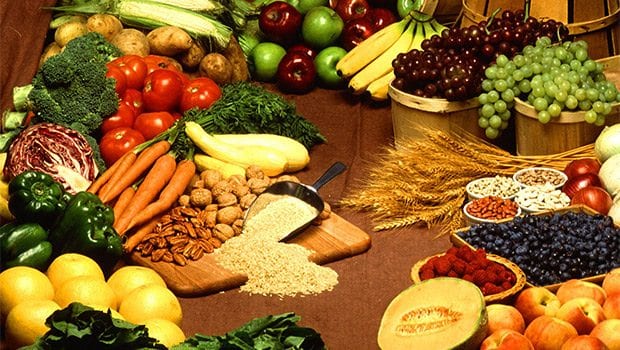The DASH eating plan
A natural way to lower blood pressure

The average American consumes more than 3,400 milligrams of sodium a day, which is more than twice the 1,500 mg recommended by the American Heart Association for African Americans and older adults.
We consume most of our sodium from prepackaged processed meals, snacks, breads, pasta and canned soups.

Kathy Cunningham, M.Ed., R.D., L.D.
Several years ago the National Heart, Lung, and Blood Institute sponsored a landmark study to examine the effect of healthy eating on blood pressure. The Dietary Approaches to Stop Hypertension, or DASH, is a diet rich in fruits, vegetables, whole grains and low-fat proteins and dairy products. The first DASH diet research showed that it could lower blood pressure in all study participants — those with and without hypertension — even with a daily intake of 3,000 mg of sodium.
The findings suggest that following a DASH plan might serve as an alternative to drug therapy in those with stage 1 HBP (140-159/90-99) and may delay or even prevent the need for medication in those with pre-hypertension (120-139/80-89). For participants with normal blood pressure, the results suggest that following a DASH plan may prevent HBP altogether.
Subsequent DASH studies examined the impact of varying levels of daily sodium consumption (3,300, 2,300 and 1,500 mg) and found that the lower the sodium, the lower the pressure. The results were particularly noted in African Americans.
The DASH diet is really a misnomer. It is actually a lifestyle plan rather than a diet. It encourages increasing consumption of potassium and other essential vitamins and minerals, including fiber, protein and calcium. Fortunately, dairy products are not the only food source of calcium. For those who are lactose intolerant many fortified lactose or dairy-free products available. Other foods rich in calcium are dark green leafy vegetables, dried beans and canned fish with soft bones, such as sardines.
The original DASH diet research was not designed for weight loss. However, the Premier Trial — the third leg of the DASH trial studies — found that those who followed the DASH plan and received counseling on behavioral changes for good health, lost weight as well as lowered their blood pressure.
The DASH plan has had an unintended outcome. Participants lowered their LDL, or bad cholesterol levels as well as their blood pressure, which indicates that the plan is effective in reducing the risk of many other diseases, such as stroke, heart disease, diabetes and some kinds of cancer.
Because of its many benefits, the DASH plan has been ranked as the number 1 diet in the country by U.S. News & World Report from 2011 through 2014.
When making a change in diet it’s best to take small steps. Giant leaps are hard to sustain. You can begin the DASH meal plan with a gradual decrease in sodium intake, and within three to four weeks you should see a change in the systolic pressure, or upper number of your blood pressure. Within the same time frame, your taste for salt and salty foods should also decrease. This gradual process can help you reach your goal of 1,500 mg (2/3 teaspoon of salt) without missing the flavor in foods and, more importantly, achieving the optimal effect on blood pressure reduction.







